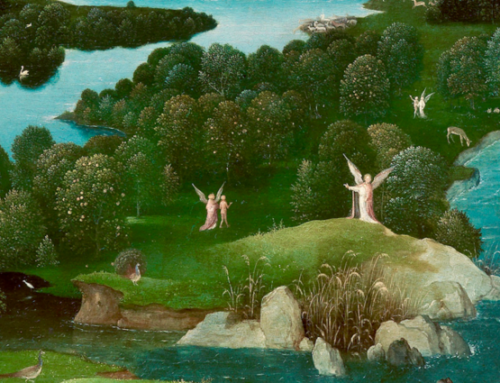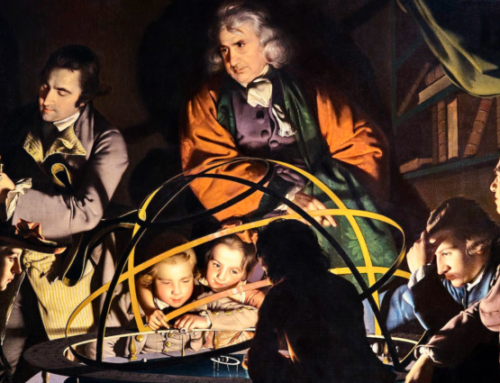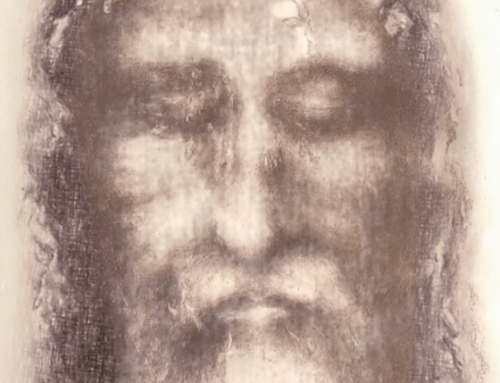 Some adages are so well-worn by constant use and abuse that they are considered truisms. We begin to assume that they are true without really thinking about them, making truth itself both trite and trivial. One such adage is the belief that beauty is in the eye of the beholder. Such a belief makes beauty subject to the beholder, and not the beholder subject to beauty. It implies that everyone’s perception of beauty is equally valid; it’s a personal relationship between the thing beheld and the individual beholding it. This reduces beauty itself to nothing but a figment of the individual’s imagination, having no objective existence. It renders beauty meaningless. It has no universal presence. It does not exist except as a thing perceived through the lens of the individual’s pride and prejudice.
Some adages are so well-worn by constant use and abuse that they are considered truisms. We begin to assume that they are true without really thinking about them, making truth itself both trite and trivial. One such adage is the belief that beauty is in the eye of the beholder. Such a belief makes beauty subject to the beholder, and not the beholder subject to beauty. It implies that everyone’s perception of beauty is equally valid; it’s a personal relationship between the thing beheld and the individual beholding it. This reduces beauty itself to nothing but a figment of the individual’s imagination, having no objective existence. It renders beauty meaningless. It has no universal presence. It does not exist except as a thing perceived through the lens of the individual’s pride and prejudice.
It is no mere coincidence that those who claim that beauty is in the eye of the beholder, also proclaim that goodness is equally in the eye of the beholder, and so is truth. The good doesn’t exist except insofar as I find it good, which usually means that it makes me feel good. The truth doesn’t exist except insofar as I find it true, which usually means that it justifies my behaving in any manner that I wish. In essence, we san see and say, therefore, that this particular adage is an expression of philosophical relativism which is another way of saying that it has no objective validity. From a relativist perspective, it is only true if you believe it to be true; the truth of the adage is itself in the eye of the beholder. From a realist perspective, it is simply untrue; its so-called “truth” being the usual relativist error of confusing and conflating goodness, truth and beauty with preference, prejudice and opinion.
Preference, which is often kindled by prejudice, has nothing to do with beauty. I suspect that many young people prefer rap to Rachmaninoff but this says nothing about the relative merits of either form of “music.” One doesn’t like rap because of its beauty but because of its message, the ugliness and brutality of the rap reflecting the ugliness and brutality of the message. By way of contrast, one does like Rachmaninoff because of its beauty, which is inseparable from our sense that it is also good and true. It violates our sense of reality to say that Rachmaninoff’s Rhapsody on a Theme of Paganini is ugly or bad; it is clearly neither, whether we prefer it to other forms of music or not. There is something about what it is that transcends our opinions and prejudices.
This transcendent aspect of beauty is present to an even greater degree in the primal art of Creation. When we see a sunrise, or leaves washed with sunlight, we know that we are experiencing something beautiful that reflects something that is also good and true. And such knowledge transcends our preferences, prejudices and opinions. This can be illustrated through the employment of an imaginary experiment.
Let’s imagine that we put a Muslim, a Protestant, a Catholic, a Buddhist and an atheist in a field in the middle of the night. Let’s now imagine that we sit them down so that they are all facing east. As dawn approaches, they will see the sky change from black to an indigo shimmering with the barest hint of rose. The rose-coloured hue will then spread across the sky in blushing shades of red. Perhaps they will then see the sun rising above the horizon in resplendent white. Perhaps for a minute or so, as it turns from white to red, they can look straight at it. It is only as the dazzling orb turns to gold that they must avert their gaze. As this magnificent work of art metamorphoses before their eyes all of those present, irrespective of their religious and philosophical preferences and prejudices, will know that they have experienced the kiss of beauty and will be glad. Echoing the words of Peter to Jesus at the Transfiguration they will know that it is good that they are there.
Let’s now imagine the same scene with the same group of people but we’ll add Gollum to their company. As the others gaze in awe at the transfigured sky, Gollum, the light-fearing wretch in The Lord of the Rings, will skulk off in horror seeking a rock under which to hide. Is Gollum’s view of beauty as valid as the view of his neighbours? Is the beauty of the sunrise in the eye of the beholder? Should we respect Gollum’s singular originality in preferring the darkness of his cave to the sunlight? Do we have a right to question the legitimacy of what he considers to be beautiful? Are we being judgmental should we consider his light-shunning preferences as a failure to see what is really there? Are we being narrow-minded should we suggest that he is suffering from a blindness that prevents his being able to behold the beautiful?
The final word on the subject should belong to Thomas Aquinas, a man who saw further than almost anyone into the goodness, truth and beauty of reality. St. Thomas tells us that all perception of goodness, truth and beauty begins with the virtue of humility. It is this virtue, the antidote to the poison of pride, which brings the sense of gratitude that opens our eyes in wonder. Such wonder leads to that contemplation of reality which dilates the mind, the pupil of the soul, so that it may penetrate into the fullness of the real.
It is for this reason that we should approach reality on our knees, avoiding the blindness of prideful prejudice. We should approach beauty, as we should approach goodness and truth, with a sense of gratitude for a gift received that we don’t deserve, repeating the words of the centurion in the Gospel: Domine, non sum dignus. Lord, I am not worthy.
Is beauty in the eye of the beholder? No, it is in the thing beheld. And we truly see the thing beheld by ceasing to believe that beauty is in our beholding of it.
The Imaginative Conservative applies the principle of appreciation to the discussion of culture and politics—we approach dialogue with magnanimity rather than with mere civility. Will you help us remain a refreshing oasis in the increasingly contentious arena of modern discourse? Please consider donating now.
Editor’s note: The featured image is by J. Sibiga Photography, and is licensed under Creative Commons 2.0.







Dear Mr. Pearce— whenever I hear this phrase about beauty and the beholder, I am taken to Sonnet #15, When I consider everything that grows/Holds in perfection but a little moment. As a day wanes, I hold whatever moments of perfection have been perceived by me, and that can make a good day, or a bad day, or the best day ever. When an old man sees his old wife, his eye observes her moments of perfection in their life together, and that will make her forever beautiful to him. God the sovereign, outside of time, certainly looks on His people through the lens of Christ’s blood and sees our moment of perfection, and making His church beautiful. Thanks for a great read today!